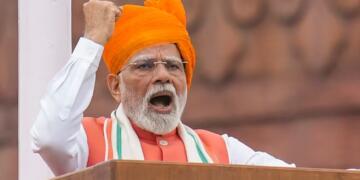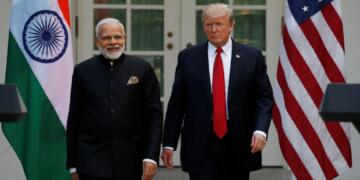Recently, the IMF revised its global growth rate projections. It had earlier forecast a global growth rate of 3 per cent for 2019, and a rate of 3.4 per cent for 2020. Now, it has slightly downgraded the predictions to 2.9 per cent and 3.3 per cent for 2019 and 2020 respectively. For 2021, the Washington based institution has forecast a global growth rate of 3.4 per cent. There is 0.1 per cent drop as compared to the previous figures, which is quite slight. There has been a significant downward revision for India, and the IMF has cut India’s growth forecast by 130 basis points for 2019-20 and 120 basis points for 2020-21. Therefore, a significant downward revision of more than 100 basis points for both these years is probably the biggest factor behind the 0.1 per cent downgrade in global growth projections.
It is important to mention here that the World Economic Outlook is released twice a year. The last one was released in October, which has now been updated and released at Davos. In the October release, the IMF had projected 6.1 per cent growth rate for India amidst a “synchronised slowdown” in global growth. Now, the institution has revised its figures from 6.1 per cent to 4.8 per cent. There was clearly an expectation that the resilient nature of the Indian economy will substantially withstand the gloomy global growth scenario. However, India too is affected by the bleak global growth.
In the October World Economic Outlook, the IMF had described the global growth scenario as in “a synchronized slowdown, with escalating downside risks that could further derail growth.” Now, Gita Gopinath, Chief Economist of the International Monetary Fund, has stated, “Since then, some risks have partially receded with the announcement of a US-China Phase I trade deal and lower likelihood of a no-deal Brexit.”
According to her, “the slight downward revision of 0.1 percent for 2019 and 2020, and 0.2 percent for 2021, is owed largely to downward revisions for India.”
As per Gita Gopinath, the projected global growth rate recovery remains uncertain. While the advanced economies stabilise at close to current levels, the growth continues to rely upon stressed and under-performing global market economies.
It is usually the emerging markets economies that have a greater impact to make on the global growth rate scenario.
While the downward revision in the Indian growth rate has contributed to a slight reduction in the global growth rate projections, it is important to bear in mind that US-China trade tensions were detrimental to Chinese growth which has affected the global supply chain.
The global auto sector slump, which Gita Gopinath says will recover in the near future as the impact of new emission standards will start to fade, has also affected the Indian economy substantially.
The slump in the auto sector has been the biggest cause of the slowdown in India, in tandem with the rest of the world. India’s auto sector has been a major drag on industrial and overall economic growth.
Moreover, the US sanctions on importing Iran oil has been another cause of concern. Before the US-Iran tensions led to the US reimposing sanctions on Tehran, India was the second largest importer of oil from the Shia-majority country. However, India was forced to drop Iranian oil as Washington did not allow any waivers on its sanctions on importing Iranian oil.
Therefore, while the downward revision of India’s economic growth has triggered a revision in the global growth rate numbers, India’s growth itself has been severely affected by the global economic slowdown.
The IMF has stated that the main reason behind India’s slowdown and the Washington-based institution’s downward revision has been sharper than expected slowdown in the local demand and stress in the nonbank financial sector. Major NPAs, like default by IL&FS, India’s leading infrastructure finance company, in payments to lenders has been a major drag on the Indian economic growth.
However on the bright side, India has continued to work on its fundamentals which will eventually lead to unprecedented economic growth, and even much intended solid, sustainable growth.
India’s forex reserves have hitten a record high of US $457 billions. India’s Current Account deficit has also narrowed further. India’s inflation is low despite good growth numbers. The IMF has suggested an accomodative Monetary Policy where inflation is still in control. In India’s case, IMF’s World Economic Outlook has cited fiscal and monterary stimulus, along with its expectations of subdued oil prices, for its projected improvement in India’s growth rate over this and the next year. This comes as a much needed push for greater liquidity. The report has predicted growth rates of 5.8 per cent and 6.5 per cent for 2020 and 2021 respectively.
The 0.1 per cent reduction in global growth rate projections is largely due to India’s revised growth numbers. However, this is being portrayed as India being responsible for 80% of the global economic growth slump, which, flattering as it is, is not the truth.
https://twitter.com/AnOpenLetter001/status/1219584937189265410?s=20
These are just estimates and which changing dynamics, the numbers have slightly changed. Gita Gopinath, The IMF Chief Economist too has stated that downward revision in India’s growth numbers has caused the slight reduction in global growth rate numbers. She nowhere said that India’s slowdown is the cause behind the global growth slump. The claims of India bringing down global growth in the basis of IMF’s World Economic Outlook is thus a spin of a monumental character.


































